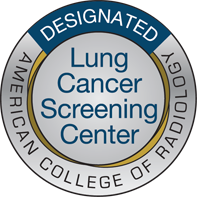
Traditionally, October has been marked by ghouls, ghosts, goblins, and black and orange as far as the eye could see. As times changed and the word “cancer” became more commonplace and less stigmatized, the meaning of the month of October changed with it. Instead of spooky décor and activities, our world is now colored pink and now adorned with 5Ks, fundraising events, and families.
Families who are supporting their survivors and fighters, and remembering the loved ones they’ve lost – all in the name of awareness.
The reasoning behind the push for awareness is a percentage. According to the American Cancer Society, 13% of women in the United States, about 1 in 8, will develop an invasive form of breast cancer in her life time. While that number may seem small, statistics show that women with breast cancer are less likely to reach the survivorship stage than women with any other type of cancer, except lung.
Despite these numbers, the amount of women who don’t reach the survivorship stage of their fight have been steadily decreasing since 2007, according to BreastCancer.org. While this is partly due to advancements in life-saving technologies and medicines, the decrease can also be contributed to the awareness of self-examinations and annual mammograms.
Dr. Emily Tanzler (radiation oncology) and Dr. Leann Fox (medical oncology) teamed up to put together a list of easy-to-follow, preventative measures that all women should keep in mind.
Self-Examinations:
Tanzler: This is one of the most important things a woman can do for herself. Self-breast examinations can be in the bathroom after your shower or while lying in bed. Doing this regularly, once a month, familiarizes yourself with your anatomy and makes it easier to tell if there is a change, such as a lump or bump.
Fox: Absolutely. While it’s not a full diagnosis or 100% effective, it’s still important to be able to have a baseline in which to track changes.
Mammograms:
Fox: Mammograms are the most effective way to find abnormalities in breast tissue. The low dose x-rays are able to show masses or calcifications that could be cancerous. Mammograms should be done yearly, with the recommended start age being between 40 and 44. After that, women through the age of 54 should continue yearly mammograms and switch to every two years at the age of 55.
Tanzler: That’s right. But age aside, if you notice something abnormal during your self-breast exam, a mammogram may be the next best step when it comes to determining what the abnormality you’re feeling is. Ask your doctor!
Genetic Testing:
Tanzler: If you or a family member is diagnosed with breast or ovarian cancer, it is important to talk to your doctor to see if genetic testing for the BRCA gene mutation is right or would benefit you. This is a genetic mutation that is inherited and can increase your chances of getting breast cancer.
Fox: Mutations in the BRCA gene stop them from working as tumor suppressors, like they were designed to do. According to the CDC, about 5%-10% of breast cancers are hereditary, meaning they can be passed from parent to child. Ask your physician whether or not they feel the test is necessary.







